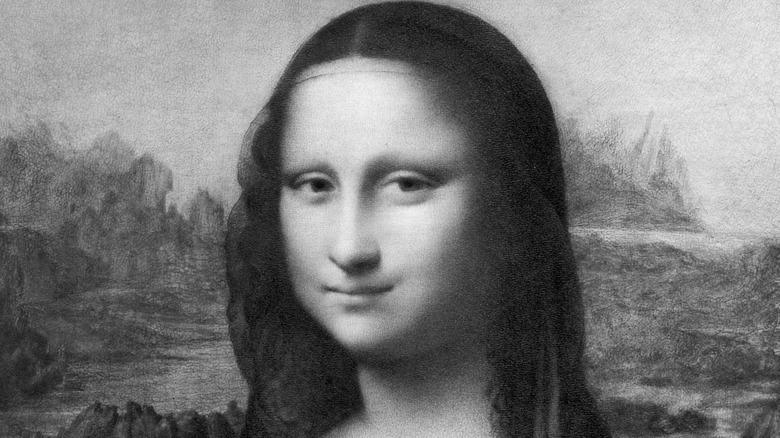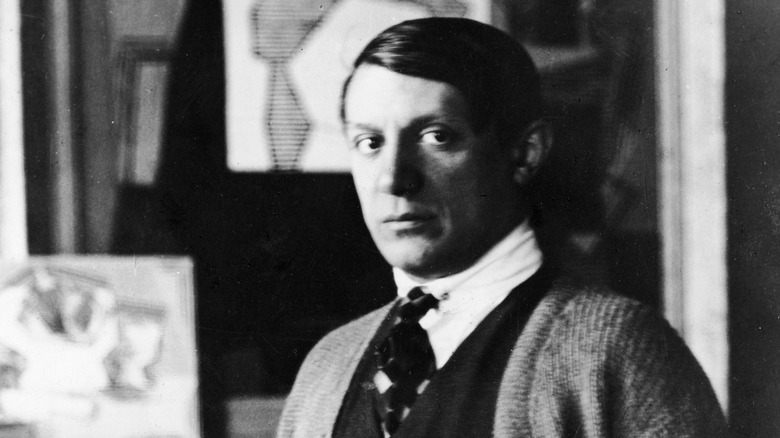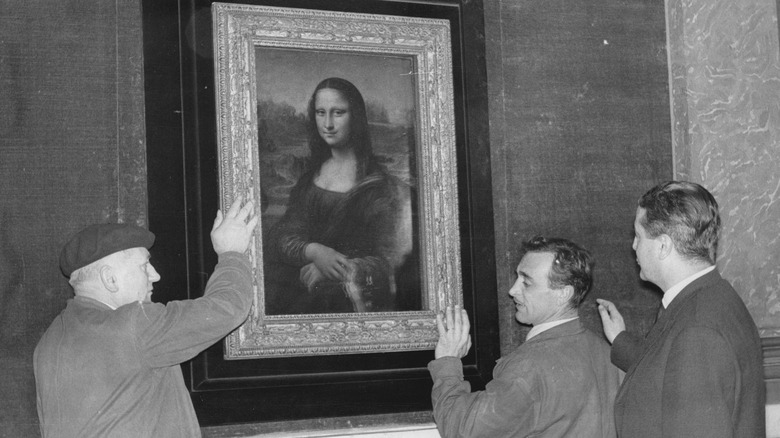Why Picasso Was Questioned About The Theft Of Da Vinci's Mona Lisa
Leonardo da Vinci's "Mona Lisa" is one of the most recognized paintings to this day. However, that wasn't always the case. The painting was done by da Vinci in 1507, but it wasn't until the 19th century that it was recognized as a Renaissance masterpiece. Even then, the "Mona Lisa" was only popular among those in the art world. The "Mona Lisa" made the Louvre Museum in Paris its home in 1797 and remains displayed there to this day, per Paris City Vision.
Despite not being as popular as it is today, the "Mona Lisa" was considered a valuable piece of art. The painting's popularity, however, skyrocketed because of an incident that took place on August 22, 1911 — the theft of the "Mona Lisa." Back then, the painting wasn't the most popular work of art in the Louvre, and per NPR, it wasn't until 28 hours later that anyone saw that the painting was gone. After the Louvre announced the theft, the "Mona Lisa" became popular all over the world as newspapers printed headlines on the case.
According to Open Culture, the Louvre Museum was closed for a week, some employees lost their jobs, borders within the country were closed, and trains and ships were searched as a result of the theft.
The connection to Pablo Picasso
During the course of the investigation, authorities were given a tip about some pieces of art that had been stolen from the museum in the past. Though it wasn't about the "Mona Lisa," investigators followed the lead in case the thieves from the other art thefts were the ones responsible for stealing the da Vinci painting, per Today I Found Out. The one who provided the tip was Joseph Gery Pieret, who confessed to stealing some art from the Louvre and proved it by bringing a small statue that he stole from an exhibit.
Pieret was questioned and authorities discovered that he had stolen other artifacts that he sold to some people, according to Artsy. Upon further investigation, it was found out that Pieret was the former secretary of poet Guillaume Apollinaire, who was part of painter Pablo Picasso's circle that was called "la bande de Picasso." It turned out that Picasso and Apollinaire were two individuals that bought stolen art from Pieret.
Upon learning the news that police were onto them, Picasso and Apollinaire planned to get rid of the stolen statues in the Seine river, but ultimately decided to turn them in to the Paris-Journal newspaper on the condition of anonymity, per Mental Floss.
Who stole the Mona Lisa?
Although the newspaper agreed to publish a story regarding the stolen art without mentioning Apollinaire and Picasso, authorities stepped in, and soon, both men were ordered to appear in front of a magistrate (via Mental Floss). Apollinaire confessed to having stolen art and his connection to Pieret in court. Meanwhile, Picasso wept during the proceeding, and at one point, even denied ever knowing Apollinaire. Based on thorough investigation, Picasso and Apollinaire were found innocent of having anything to do with the theft of the "Mona Lisa" and the case was eventually thrown out.
In December 1913, two years after the theft, the "Mona Lisa" emerged in Florence, Italy. The thief attempted to sell the painting to an art dealer, but luckily, the dealer became suspicious and had the painting authenticated. The thief turned out to be Vincenzo Perugia, a former employee at the Louvre. The "Mona Lisa" was returned to its home in Paris, and Perugia spent eight months in prison for the theft (via NPR).


